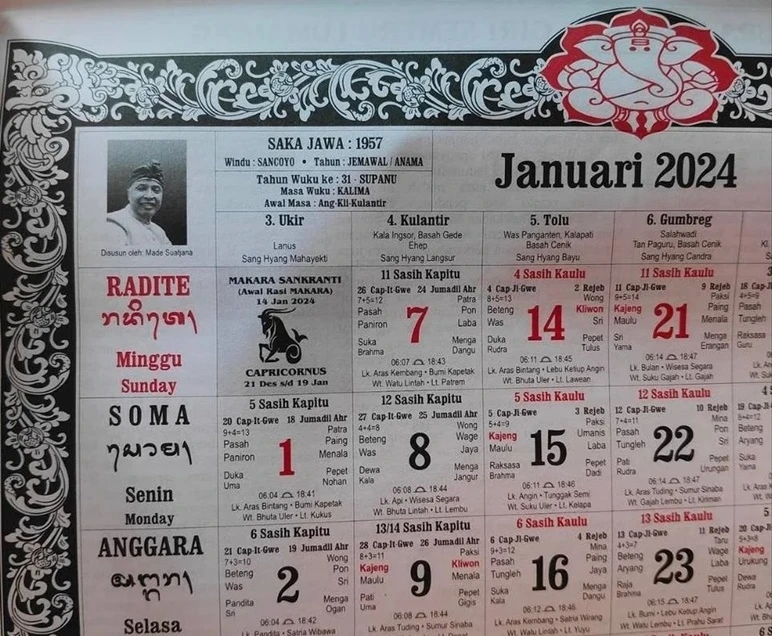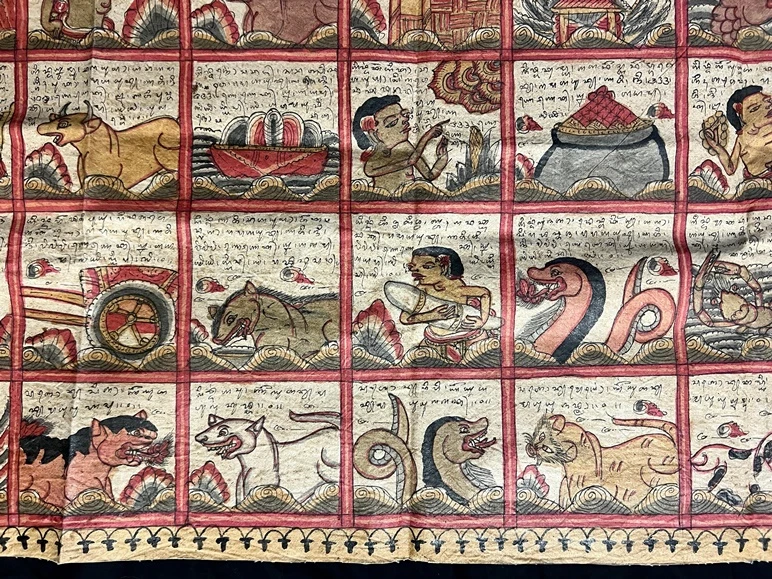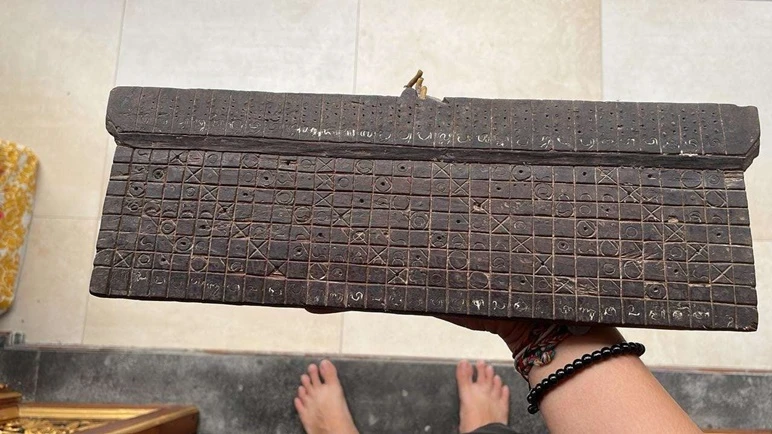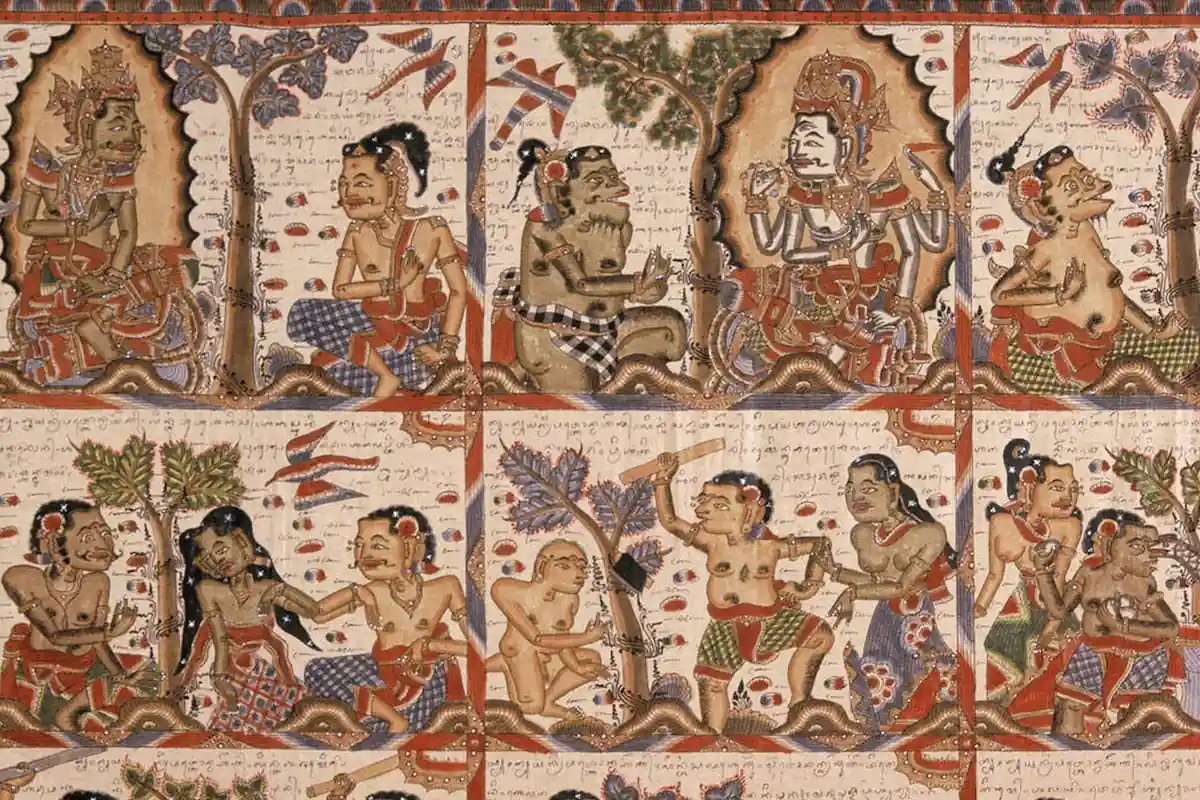To truly understand Bali, you need to understand how the Balinese measure time. The island runs on more than just the Gregorian calendar used worldwide. Beneath the surface of temple rituals, ceremonies, and festivals lies a complex system that governs almost every aspect of daily life. This system is a combination of two unique calendars: the Saka and the Pawukon. Both are deeply rooted in Hindu-Javanese tradition and together create the spiritual heartbeat of Bali.
Understanding the rhythm of time and tradition on the Island of the Gods
The Dual Calendars of Bali
Unlike the single, linear calendar most of the world follows, the Balinese use two calendars that run side by side. Each serves a distinct purpose. The Saka calendar is lunar-based and roughly aligns with the solar year, while the Pawukon calendar follows a fixed 210-day cycle with no relation to the moon or sun.

While modern Bali uses the Gregorian calendar for daily business, flights, and school schedules, the Saka and Pawukon calendars still determine the timing of ceremonies, festivals, and temple anniversaries. For visitors, understanding these calendars offers a glimpse into how time in Bali flows in cycles rather than straight lines.
The Saka Calendar: The Lunar Rhythm of Ceremonies
The Saka calendar traces its origins back to the ancient Hindu calendar of India, dating to 78 AD. It was later adapted by Bali’s ancestors to suit the island’s agricultural rhythms and ceremonial needs. A year in the Saka calendar has twelve lunar months, each containing 29 or 30 days, totaling about 354 days. To keep the lunar and solar years in balance, an extra month is added every thirty months.

Each Saka month begins a day after Tilem, the new moon, and reaches its peak at Purnama, the full moon. Both phases hold deep spiritual meaning. On full moon nights, temples across the island fill with worshipers dressed in traditional attire, carrying elaborate offerings and lighting incense. These nights are considered sacred and are often celebrated with music, dance, and prayers. The most significant event in the Saka calendar is Nyepi, known as the Day of Silence, which marks the start of the new Saka year. Falling after the new moon of the ninth month, Nyepi is a day of stillness and introspection when the entire island comes to a peaceful halt. It symbolizes purification, renewal, and harmony with the universe.
The Pawukon Calendar: The 210-Day Ritual Cycle
If the Saka calendar mirrors the moon, the Pawukon calendar reflects the island’s spiritual and agricultural rhythm. It is a 210-day cycle divided into thirty weeks, each called a wuku. Every wuku has its own name and significance, from Sinta (the first wuku) to Watugunung (the last). After the thirtieth wuku, the cycle restarts, creating a continuous loop of time.

Unlike the Saka system, the Pawukon calendar does not measure years or track the moon. Instead, it operates through overlapping weekly cycles ranging from one to ten days. Each day’s character and spiritual meaning are determined by how these cycles align. This complex interplay helps Balinese priests choose auspicious days (hari baik) for important ceremonies such as weddings, temple anniversaries, or house blessings. Major festivals such as Galungan, Kuningan, and Saraswati are determined by the Pawukon system. Galungan, for instance, celebrates the victory of good over evil and happens every 210 days, meaning it appears to “float” through the Western calendar and occurs twice a year.
The Ancient Tika: Bali’s Wooden Calendar of Wisdom
Long before printed or digital calendars, the Balinese relied on a remarkable tool called the Tika. This ancient wooden calendar, often carved on a board or inscribed on palm leaves, served as a sacred guide for priests and scholars to read auspicious dates.

The Tika combines the elements of both the Saka and Pawukon calendars, displaying intricate symbols, numbers, and sacred marks that represent different cycles of days and wewaran (the intersecting weeks). Reading it requires deep knowledge passed down through generations of Brahmana priests.
Harmony Between the Two
What makes Bali’s calendar system remarkable is the harmonious coexistence of the Saka and Pawukon calendars. The Saka calendar guides lunar-based observances like Nyepi and aligns agricultural activities with nature’s rhythm, while the Pawukon calendar governs shorter ritual cycles that sustain social and spiritual balance. Together, they create a continuous flow of ceremonies and traditions that shape the island’s daily life, from planting and harvesting to prayer and celebration.

Though smartphone apps now offer digital versions, the essence remains the same. Time in Bali is seen not as something that passes, but as something that returns, cycles, and connects.




 Billy Bagus
Billy Bagus
 Nov 04, 2025
Nov 04, 2025






